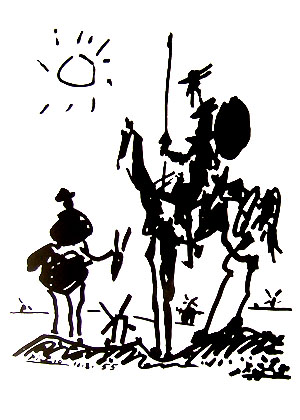Morton's Foot
Human stability in the standing position has many elements, one of which is a triangle in the foot formed by the heel bone and the metatarsal heads of the first (big) and fifth (little) toe. In the optimal condition, the middle metatarsal heads of the feet do not contact the ground before the first and fifth, and so when planting the foot, the ankle is stable.
However, quite commonly, the second metatarsal head does contact the ground before the first, forming a de facto smaller triangular base with the heel and fifth metatarsal head. This is Morton's Foot (or Morton's toe, after the fact that the second toe usually extends farther than the first toe). The result is disastrous for balance. This is because in proper standing alignment, a great deal of force is exerted along the the vertical plane formed between the heel and the first toe. The result is, that instead of standing on platforms, the person is standing on something akin to ice skates. Wobbliness is a constant feature. The condition is even more conspicuous when barefoot, since shoes partly compensate. Over-pronation, and distortions in the ankle and knee, ensue in an attempt to compensate. This has profound repercussions in feelings of security, love, and aggression. The passive back-on-the-heels stance may in fact be in part compensatory for Morton's foot.
The root cause is generally felt to be a second metatarsal bone which is too long and therefore unavoidably contacts the ground before the first. Whether this inauspicious length is due to genetic or developmental factors is not proven. My guess is that early development (which proceeds in humans from head first to feet last) has something to do with it. It seems that work to develop a higher more natural arch can ameliorate the instability and effect on balance which have such far-reaching consequences.
